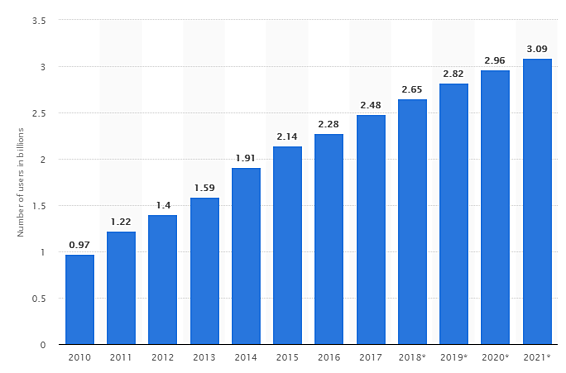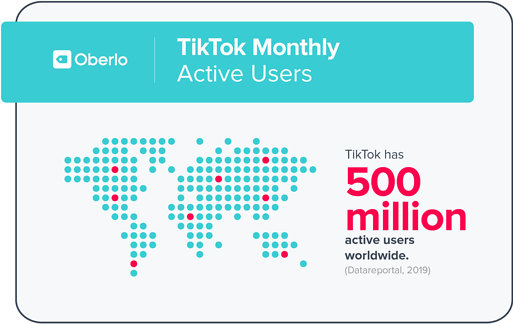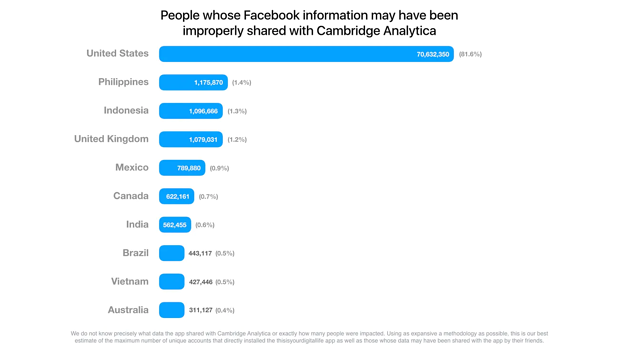
Social media has grown tremendously with 2019 trends making their way into our lives and transforming the way we communicate and connect with people.
This entire decade has served as an active catalyst for innovation in this space. At the start of this decade, Facebook was an emerging platform.
Today, it is the biggest social media company in the world.
A platform to share photos with pre-set filters is now one of the most influential social media companies around and is no less than a cultural phenomenon.
We have seen companies like Snapchat innovating their way to success, and new players like Tik Tok that have become the go-to way for millions around the world to have fun.
That’s why in this post we’ve set out to capture some of the hottest social media trends for 2020 for businesses around the world.
Highlighted in this article are some of the best social media tactics and ideas you’ll need to know heading into the new year. Staying on top of these social media marketing trends will help you craft a stronger strategy to drive positive business growth.
Let’s check them out!
2020 Social Media Marketing Trends
Trend #1 — Social Media for Customer Service
Two billion users on Facebook, 700 million on Instagram, and 300 million on Twitter. The numbers only keep on increasing.

Just having a presence on social media is no longer enough for brands. Brands now need to take a more proactive stance.
One of the biggest social media trends for 2020 is also what’s most likely doesn’t look like a trend, but has had increased focus of companies all across the globe. And that trend is innovation in the social media customer servicespace.
According to Gartner, by 2020, over 90% of companies will be using social media for customer service. The transition happened gradually as customers started reaching out to their favorite brands on social media for quick, real-time support.
With brands safeguarding their reputation on social media, it has now become imperative for brands to respond to customer queries and establish a more direct relationship with them.
Social media customer service is vital to building positive brand reputationas word travels lightning fast when a customer isn’t satisfied, or worse. Moreover, social media platforms are now enabling brands with customer service tools.

Many companies are creating dedicated customer service handles on Twitter. As a result, the platform now allows you to show to the world that your account provides customer support.

Managing customer service on social media can be a painful process if not streamlined, but with the right tools (and people), it can be a quick and effective way to resolve complaints and get publicity.
Customers expect quicker customer service on social media due to its fast-paced nature, and not being able to respond quickly is usually worse than the fallout of not being able to resolve the complaint itself.
Social media platforms have recognized this. They are now offering tools to help you natively manage customer service on the platform, apart from the myriad other third-party tools that are available on the market.
Whichever tool you use, it is crucial to be quick and empathetic while catering to an upset customer. As Jay Baer alludes to in his book Hug Your Haters, angry customers are your greatest opportunity to turn someone from a hater into a lover of your brand.
When treated fairly and with respect, it is often those who have had a bad experience who end up becoming your passionate fans. When you go the extra mile to make your wrong a right, people take notice.
Trend #2 — The Wave of User Generated Content
Utilizing user-generated content is one of the most natural ways to garner loyalty and build awareness. Marketers have been using this for quite a while now, just that the rate of adoption has reached breakneck speed (hey Tik Tok! we are looking at you!)
Authenticity is the backbone of user-generated content, and 90% of customers say authenticity is essential while choosing which brand to support. Moreover, customers find user-generated content to be more impactful than influencer marketing, to be precise 9.8x more impactful!
Brands such as Airbnb and Daniel Wellington utilize user-generated content exceptionally well.


Running a marketing campaign that requests users to create content is going to be big in 2020, especially on new and emerging platforms like Tik Tok.
Apart from being free, user-generated content also makes your brand seem more authentic. If so many people are participating, they must really like what your company stands for. This form of social proof is a sure-shot way to break away from the clutter.
Tapping into the urge of customers to create and share content is vital to creating good user-generated content.
If it is not a part of your content mix yet, it should be for 2020! Some industries, such as tourism, naturally align with user-generated content, ergo Airbnb. However, it can extrapolate well to product-based companies too, ergo Daniel Wellington.
User-generated content is like word of mouth marketing; word travels fast and makes a lasting impression.
If you are smart enough to latch onto this trend, you can become a trendsetter yourself. Just remember that being genuine is mandatory if you want to succeed.
Trend #3- Social Media Communities
Social media communities are usually private groups created by brands for like-minded individuals. Brand enthusiasts can join and share interests in these kinds of groups.

Facebook Groups is an excellent platform to enable such communities where brands gather existing and prospective customers to share experiences, seek solutions to their problems, and thus, brands can engage with them in a meaningful way.
Not only can you use groups to help customers communicate with your brand, but you can also use them to understand your most passionate fans better. This open forum for conversation will allow you to have more insight into your audience.
Armed with this information, you can hone in on your marketing personas and create better products, more effective marketing messages, and highly-personalized campaigns.
Conde Nast launched its “Women Who Travel” Facebook Group for women to share their travel stories and experiences, inserting itself in some of the most enjoyable adventures its prospects and customers have.
Creating a social media community is almost always free and a sure-shot way to bring together some of your brand’s staunchest fans. Creating custom-content specific to this group and even testing new products is one of the few ways you can tap into this highly engaged community.
There are many B2B and B2C brands that have massive followings but not a lot to say when it comes to engagement. Creating a community is a good way to humanize your brand and drive engagement.
If you have high levels of engagement with your audience, you most likely already have a social media community, waiting to be made official. For example, did you know Starbucks has a dedicated Pumpkin Spice Latte Twitter account?

Making customer service a way of life is essential to building such communities. Happy customers open doors for other customers.
You also need to be solution-focused if you want more significant results. Being helpful and solving customer problems is one of the surest ways to build loyalty and create a community of any real value.
Just like communities IRL, communities on social media need to be nurtured to be kept alive. Stellar content matched with personalized attention is the way if you want to create and maintain a community of highly engaged users.
Trend #4 The Shift To Alternative Social Media Platforms
LinkedIn is vital for B2B platforms, whereas Twitter, Facebook, and Instagram is vital for B2C brands. But it doesn’t stop there. Increasingly other platforms are fighting for a share of the spotlight.
Tik Tok, the app launched by Bytedance in 2017 which absorbed Musical.ly in 2018, lets users create short lip-sync videos to a tune. And the app has taken the social media ecosystem by storm.

Users are increasingly getting fatigued by traditional social media platforms and are looking out for newer experiences. Facebook has seen a drop in younger users over the last two years. Twitter has come down from its all-time high of 2017, in terms of active users.
While Tik Tok is an unlikely target for B2B brands, for B2C, it is a godsend as it is a treasure trove of user-generated content. Moreover, 41% of Tik Tok users are between 16 to 24 years of age.

Tik Tok is also the right platform if your focus is on emerging markets like China and India. Increasingly, brands prefer to advertise on Tik Tok in these markets rather than traditional social media platforms, as marketers see very high levels of engagement.

Tik Tok works well for e-commerce companies as advertisements “appear” as native user-generated content. What also works well is its addictive video algorithm, which keeps users hooked and coming back for more.
Similar to Tik Tok, for e-commerce sales, Pinterest is another stellar platform to invest in. Its image-board format plays well with listing products and allowing customers to buy straight away from their feed.

Although Pinterest is not new, it has seen a recent resurgence. It is now actively being used by customers to do product discovery and seek recommendations. Inserting your brand in this part of the customer journey is a guaranteed way to build up those sales.
Moreover, 75% of Pinterest users say they are interested in new products compared to only 55% on other social media platforms. Explains why retailers are experiencing success on Pinterest, while also getting 2x more returns on their ad spend on the platform.
Utilizing these alternative platforms can help you tap into users that are not available on other platforms, as well as help you expand your marketing to different mediums so you can tell a more well-rounded brand story.
Trend #5 — The Comeback of Storytelling & Authenticity
With increasing regulations (GDPR and CCPA) and scandals (Cambridge Analytica), social media is now a war zone with tech giants on one end and policy-makers on the other end. The collateral damage is the users whose data is being sold for chump change without their consent, resulting in an overall loss of trust and transparency.
The focus now is shifting from the quantum of content to the quality of content. Instagram is leading the way by removing likes from its platform, reducing the “peer-pressure effect” in the process. The idea is that this move will eventually lead to the creation of more compelling content that isn’t bolstered by artificial praise.
No longer will posts be a “like for like” scam but a well-crafted story where users will start taking notice of the photograph and the caption before offering a like.

There is a visible push towards the creation of a community and connection, and a move away from “addictive” practices which form the foundational core of social media. In light of these changes, only those will survive that use storytelling and authenticity as the basic tenets of marketing.
Expect a tightening of norms and more policies put in place in this once Wild Wild West.
Data privacy and security are two such issues that have come to light in the social media industries, which might affect marketers and advertisers alike. An organization that proactively takes a stance towards protecting consumer data will become the new bastions of social media, where users will flock towards, gradually carrying ad spend with them.

The impetus now is towards brand storytelling and creating authentic experiences for customers.
Customers are now quick to spot inauthentic and malicious content and spread the word about their bad experiences on the very platforms that created them in the first place. Tread cautiously yet surely as you enter into the social media in 2020.
Social Media Marketing in 2020: Key Takeaways
2019 was a year of experimentation and introspection.
2020 will be a year where most social media technologies will mature and find a place in the mainstream, underpinned by a renewed sense of purpose and assurance.
Alternative platforms such as Tik Tok have opened up new worlds that none knew existed and social media platforms have become mainstream customer service channels. What’s surprising in all of this is how fast these changes have come about without anyone noticing.
Nonetheless, what you’ll need in 2020 is the ability to be flexible and willing to try out new things. All of this comes with the caveat that social media platforms are now preparing for more regulation.
But that does not mean that social media is going away anytime soon. Instead, these adaptions are a mark that it is now finally coming of age.













